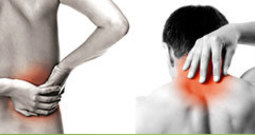
If you’re over the age of 30, and you’re experiencing pain and weakness in your shoulder, you’re probably suffering from a rotator cuff disorder. Simple everyday activities like changing your clothes or washing can be made uncomfortable or even impossible. These significant, but often understated, conditions involve irritation of the tendons and muscles that help connect the upper arm bone with the shoulder blade.

Historically, these conditions were thought to primarily involve tendinitis, inflammation of the tendons or bursitis, inflammation of the fluid-filled sacs between tendons and the shoulder blade. More recently, comprehensive clinical examinations have shown that conditions related to the overuse of tendons are more consistent with tissue degeneration, and often occur in the absence of inflammation. Also referred to as tendinitis, the causes of tendon or muscle tissue degeneration are often unknown.
Rotator cuff issues can be cause from repetitive work-related stress and strain as well as overhead motions used during sports such as badminton, squash and tennis. Other causes include poor posture, acute injuries after falling or everyday muscle and tendon degeneration that accompanies the normal aging process.
In addition to tendinitis, sudden rotator cuff tears can occur after a fall or injury which can cause debilitating pain and often require surgical treatment. Unfortunately, the success of surgery is dependent on a variety of factors, and incomplete recovery and a worsening of rotator cuff syndrome pain has been reported to be as high as 23% to 35% of the time.
Fortunately, physiotherapy for rotator cuff disorders can significantly improve the range of motion and pain management of the affected rotator cuff, especially after surgical treatment. Depending on the underlying causes and extent of the rotator cuff issue, the following treatment options may be recommended to help improve function and relieve pain:
1. Stretching Exercises
A variety of range of motion exercises are used to help exercise muscle groups of the rotator cuff to promote joint flexibility and to reduce the risks of joint mobility issues. Stretching exercises include pendulum stretches, which help stretch the area where tendons move; posterior capsule stretches, which aim to ease the tightness of the ligaments near the back of the shoulder and help to eliminate rotator cuff pain; and wand exercises, which involves improving the range of motion of the shoulder joint.
2. Strengthening Exercises
Strengthening muscles of the rotator cuff helps to prevent re-injury. These exercises include scapular squeezes and setting, inward and outward rotation exercises, and abduction exercises.
By combining stretching and strengthening exercises into a personalised regimen, physiotherapists are capable of significantly reducing the recovery time following surgery and greatly increase muscle strength and the range of motion of the affected rotator cuff. Although a variety of exercises will be recommended for patients to complete at home, studies have shown that the specialised supervision of a trained physiotherapist allows for a significantly better recovery after rotator cuff surgery.
For more information on how physiotherapy can effectively help those with rotator cuff disorders, please contact the trained and Chartered Physiotherapists at Physio Med. We would be pleased to examine your shoulder, and develop a personalised treatment plan that specifically addresses your needs.
For more information, please feel free to get in touch:
Tel: 0113 229 1300
Visit: Contact Us Form



